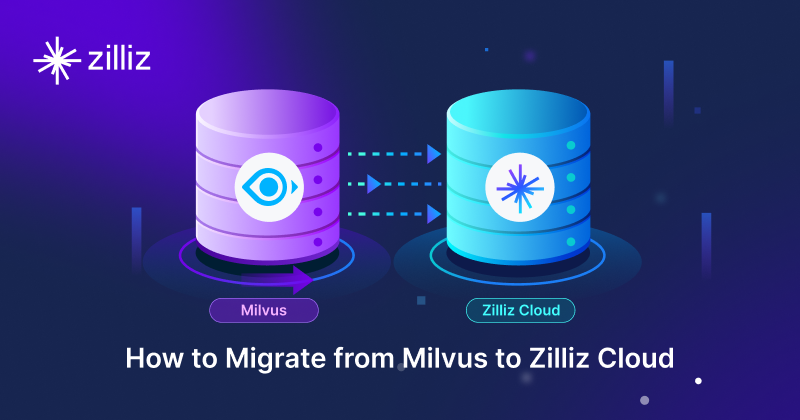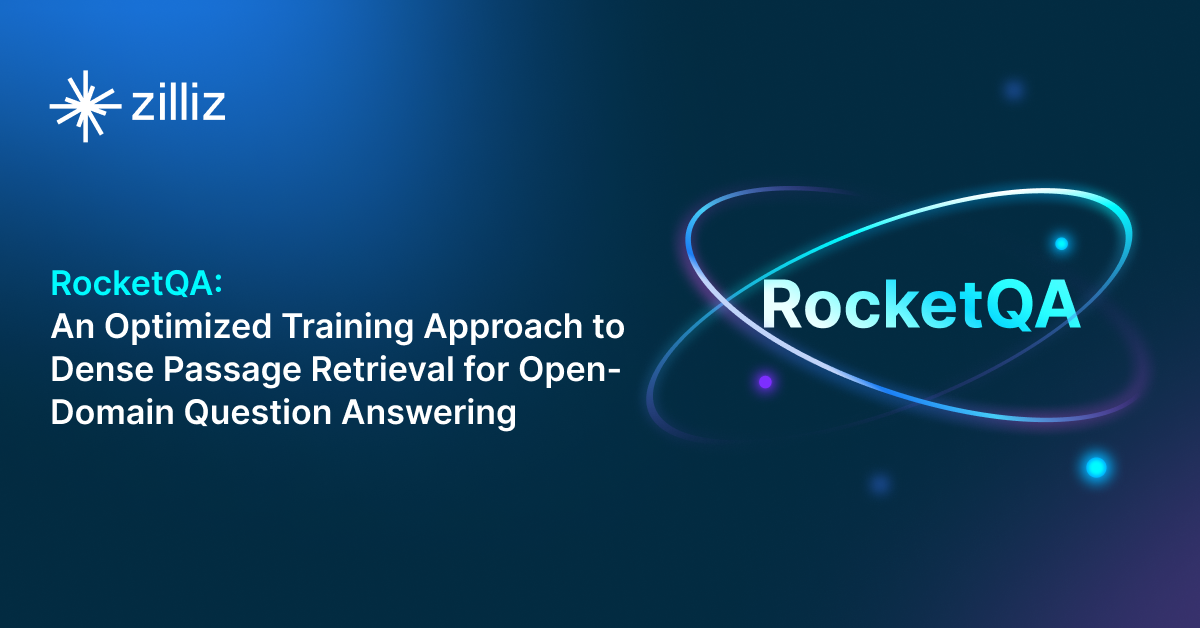SingleStore vs MyScale Choosing the Right Vector Database for Your AI Apps

What is a Vector Database?
Before we compare SingleStore and MyScale, let's first explore the concept of vector databases.
A vector database is specifically designed to store and query high-dimensional vectors, which are numerical representations of unstructured data. These vectors encode complex information, such as the semantic meaning of text, the visual features of images, or product attributes. By enabling efficient similarity searches, vector databases play a pivotal role in AI applications, allowing for more advanced data analysis and retrieval.
Common use cases for vector databases include e-commerce product recommendations, content discovery platforms, anomaly detection in cybersecurity, medical image analysis, and natural language processing (NLP) tasks. They also play a crucial role in Retrieval Augmented Generation (RAG), a technique that enhances the performance of large language models (LLMs) by providing external knowledge to reduce issues like AI hallucinations.
There are many types of vector databases available in the market, including:
- Purpose-built vector databases such as Milvus, Zilliz Cloud (fully managed Milvus)
- Vector search libraries such as Faiss and Annoy.
- Lightweight vector databases such as Chroma and Milvus Lite.
- Traditional databases with vector search add-ons capable of performing small-scale vector searches.
SingleStore is a distributed, relational, SQL database management system and MyScale is a database built on ClickHouse that combines vector search and SQL analytics. Both have vector search capabilities as an add-on. This post compares their vector search capabilities.
SingleStore: Overview and Core Technology
SingleStore has made vector search possible by putting it in the database itself, so you don’t need separate vector databases in your tech stack. Vectors can be stored in regular database tables and searched with standard SQL queries. For example, you can search similar product images while filtering by price range or explore document embeddings while limiting results to specific departments. The system supports both semantic search using FLAT, IVF_FLAT, IVF_PQ, IVF_PQFS, HNSW_FLAT, and HNSW_PQ for vector index and dot product and Euclidean distance for similarity matching. This is super useful for applications like recommendation systems, image recognition and AI chatbots where similarity matching is fast.
At its core SingleStore is built for performance and scale. The database distributes the data across multiple nodes so you can handle large scale vector data operations. As your data grows you can just add more nodes and you’re good to go. The query processor can combine vector search with SQL operations so you don’t need to make multiple separate queries. Unlike vector only databases SingleStore gives you these capabilities as part of a full database so you can build AI features without managing multiple systems or dealing with complex data transfers.
For vector indexing SingleStore has two options. The first is exact k-nearest neighbors (kNN) search which finds the exact set of k nearest neighbors for a query vector. But for very large datasets or high concurrency SingleStore also supports Approximate Nearest Neighbor (ANN) search using vector indexing. ANN search can find k near neighbors much faster than exact kNN search sometimes by orders of magnitude. There’s a trade off between speed and accuracy - ANN is faster but may not return the exact set of k nearest neighbors. For applications with billions of vectors that need interactive response times and don’t need absolute precision ANN search is the way to go.
The technical implementation of vector indices in SingleStore has specific requirements. These indices can only be created on columnstore tables and must be created on a single column that stores the vector data. The system currently supports Vector Type(dimensions[, F32]) format, F32 is the only supported element type. This structured approach makes SingleStore great for applications like semantic search using vectors from large language models, retrieval-augmented generation (RAG) for focused text generation and image matching based on vector embeddings. By combining these with traditional database features SingleStore allows developers to build complex AI applications using SQL syntax while maintaining performance and scale.
What is MyScale? Overview and Core Technology
MyScale is a cloud based database built on top of the open source ClickHouse database, designed for AI and machine learning workloads. It can handle structured and vector data and real time analytics and machine learning. MyScale is focused on time series, vector search and full text search so it’s good for real time processing and AI driven insights. By using ClickHouse architecture, MyScale is high performance and scalable for AI.
One of the key features of MyScale is native SQL support which simplifies AI driven queries by integrating vector search, full text search and traditional SQL queries in one system. This reduces the need for multiple tools and makes it scalable for AI. MyScale supports and manages analytical processing of both structured and vectorized data on one platform using OLAP database architecture to operate on vectorized data. Developers can interact with MyScale using SQL so it’s accessible to all programmers familiar with relational databases.
MyScale has multiple vector index types and similarity metrics to support different use cases. It supports common distance metrics like Euclidean distance (L2), inner product (IP) and cosine similarity. The database has multiple indexing algorithms: MSTG (Multi-Scale Tree Graph), ScaNN, IVFFLAT, IVFPQ, IVFSQ and HNSW, each with its own set of parameters to tune. MyScale’s proprietary MSTG vector engine uses NVMe SSDs to increase data density so it outperforms specialized vector databases in both performance and cost.
By combining the functionality of an SQL database, vector database and full text search engine into one system MyScale reduces infrastructure and maintenance costs. This unification allows for joint data queries and analytics and a single data foundation for AI applications. MyScale also has MyScale Telemetry for full observability of LLM systems so you can monitor and debug efficiently. As data gets more complex MyScale is a future proof solution that can handle newer data modalities and database sizes while keeping computing performance and integration between different data types.
Key Differences
Search Methodology
SingleStore: k-nearest neighbors (kNN) and Approximate Nearest Neighbor (ANN) search. ANN is optimized for large datasets with trade-offs between speed and precision, good for recommendation systems and semantic search.
MyScale: More indexing algorithms (MSTG, ScaNN, IVFFLAT, HNSW). MSTG vector engine uses NVMe SSDs for high performance and storage efficiency. Multiple distance metrics (Euclidean, inner product, cosine similarity) supported.
Verdict: If you need algorithm diversity and customization, MyScale wins. For streamlined ANN and kNN with SQL SingleStore is a good choice.
Data Handling
SingleStore: Structured and semi-structured data, vectors stored in columnstore tables. Vector queries integrate with SQL, so you can do hybrid operations like filtering embeddings with relational data.
MyScale: Structured, semi-structured and unstructured data. OLAP (Online Analytical Processing) architecture allows analytical processing of both vector and traditional data types, good for mixed workloads.
Verdict: MyScale’s ability to handle unstructured data makes it more versatile for different AI workloads. SingleStore is good at vector and SQL queries for structured and semi-structured data.
Scalability and Performance
SingleStore: Distributed data storage and query processing. Scalability is easy—add nodes and you get more capacity and performance.
MyScale: Shares ClickHouse’s lineage, scalability for real-time analytics and AI workloads. MSTG engine uses NVMe for large scale datasets with cost efficiency.
Verdict: Both scale well but MyScale’s NVMe approach may be better for cost-performance for large scale AI use cases.
Flexibility and Customization
SingleStore: Structured and SQL-centric, good for applications that need tight integration with traditional databases.
MyScale: More indexing algorithms and distance metrics, more options for tuning performance.
Verdict: MyScale wins for customization, SingleStore for simplicity and SQL-based workflow.
Integration and Ecosystem
SingleStore: Vector search integrated with relational database, developers can build complete applications without additional tools.
MyScale: Vector, full-text and SQL search, fewer systems to manage. MyScale Telemetry for monitoring and debugging LLM systems.
Verdict: MyScale is future-proof, SingleStore simplifies integration with traditional database ecosystem.
Ease of Use
SingleStore: SQL syntax and comprehensive docs, lower learning curve for developers familiar with relational databases.
MyScale: SQL for interactions but broader feature set may require slightly steeper learning curve.
Verdict: SingleStore is slightly easier to get started with, SQL-first and simpler setup.
Cost
SingleStore: Vector search is part of the database, so if you already use it as your primary database you may save infrastructure costs.
MyScale: Uses efficient storage (e.g. NVMe SSDs) and unifies functions, so you don’t need separate tools.
Verdict: MyScale may be better long term for AI-heavy workloads, SingleStore if you want simplicity and integration with existing systems.
Security
SingleStore: Enterprise grade encryption, authentication and access controls.
MyScale: Inheris ClickHouse’s security features and adds observability tools, but encryption levels need to be verified.
Verdict: Both are secure, SingleStore has a slight edge on enterprise grade features.
When to Choose SingleStore
SingleStore is great when you want to combine vector search with relational data in a single, SQL-based workflow. It’s good for applications where you need to analyze structured or semi-structured data with vector embeddings, like recommendation systems, AI-powered business intelligence or RAG (retrieval-augmented generation). Its distributed architecture means scalability, and its ANN search gives you fast results on large datasets. If you want simplicity, SingleStore’s SQL-based design means you don’t need multiple tools or systems.
When to Choose MyScale
MyScale is better for workloads with multiple data types and AI applications that need flexibility. Its vector search, full-text search and real-time analytics makes it great for monitoring large AI systems, processing unstructured data or time-series analysis. MyScale’s wider range of indexing algorithms and metrics means developers can tune performance, and its NVMe-backed architecture means a cost-effective way to handle big datasets. If you want a future-proof platform that has scalability, observability and advanced indexing, MyScale is a good choice.
Conclusion
SingleStore and MyScale are both good at different things. SingleStore is great at simplifying vector search with structured data using SQL, and ease of use and scalability for traditional database-centric use cases. MyScale is good at versatility, advanced indexing and handling multiple data types for AI-heavy and real-time analytics use cases. The choice ultimately comes down to your use cases, the data you work with and your performance requirements. Choose the technology that fits your workload and development goals.
Read this to get an overview of SingleStore and MyScale but to evaluate these you need to evaluate based on your use case. One tool that can help with that is VectorDBBench, an open-source benchmarking tool for vector database comparison. In the end, thorough benchmarking with your own datasets and query patterns will be key to making a decision between these two powerful but different approaches to vector search in distributed database systems.
Using Open-source VectorDBBench to Evaluate and Compare Vector Databases on Your Own
VectorDBBench is an open-source benchmarking tool for users who need high-performance data storage and retrieval systems, especially vector databases. This tool allows users to test and compare different vector database systems like Milvus and Zilliz Cloud (the managed Milvus) using their own datasets and find the one that fits their use cases. With VectorDBBench, users can make decisions based on actual vector database performance rather than marketing claims or hearsay.
VectorDBBench is written in Python and licensed under the MIT open-source license, meaning anyone can freely use, modify, and distribute it. The tool is actively maintained by a community of developers committed to improving its features and performance.
Download VectorDBBench from its GitHub repository to reproduce our benchmark results or obtain performance results on your own datasets.
Take a quick look at the performance of mainstream vector databases on the VectorDBBench Leaderboard.
Read the following blogs to learn more about vector database evaluation.
Further Resources about VectorDB, GenAI, and ML
- What is a Vector Database?
- SingleStore: Overview and Core Technology
- What is MyScale? Overview and Core Technology
- Key Differences
- Using Open-source VectorDBBench to Evaluate and Compare Vector Databases on Your Own
- Further Resources about VectorDB, GenAI, and ML
Content
Start Free, Scale Easily
Try the fully-managed vector database built for your GenAI applications.
Try Zilliz Cloud for FreeKeep Reading

Why and How to Migrate from Self-Hosted Milvus to Zilliz Cloud
A simple, step-by-step guide to migrating from Milvus to Zilliz Cloud. Learn both endpoint and backup methods for a smooth, scalable vector database migration.

Why DeepSeek V3 is Taking the AI World by Storm: A Developer’s Perspective
Explore how DeepSeek V3 achieves GPT-4 level performance at fraction of the cost. Learn about MLA, MoE, and MTP innovations driving this open-source breakthrough.

RocketQA: Optimized Dense Passage Retrieval for Open-Domain Question Answering
RocketQA is a highly optimized dense passage retrieval framework designed to enhance open-domain question-answering (QA) systems.
The Definitive Guide to Choosing a Vector Database
Overwhelmed by all the options? Learn key features to look for & how to evaluate with your own data. Choose with confidence.